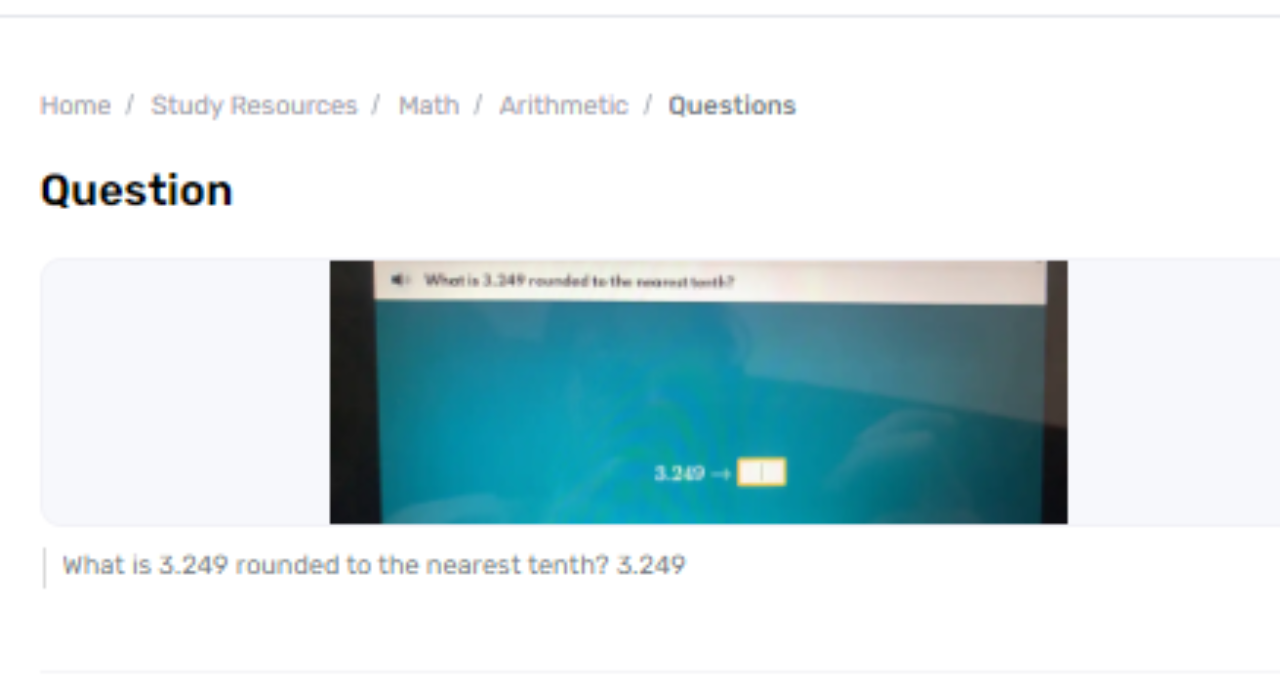Adjusting numbers could be a crucial numerical aptitude utilized to disentangle values, making them less demanding to work within different settings. Whether in daily life, logical calculations, or money-related transactions, rounding makes a difference in approximating numbers to a wanted level of accuracy. In this paper, we'll investigate the method of adjusting what is 3.249 rounded to the nearest tenth. This includes understanding the concept of adjusting, the rules that administer it, and how to apply these rules viably.
Adjusting 3.249 to the Closest Tenth
Adjusting 3.249 to the closest tenth includes centering on the digit within the tenths put and the digit promptly taking after it. Hence, 3.249 rounded to the closest tenth is 3.2. This prepares streamlined numbers, making them simpler to utilize and get in different down-to-earth applications.
Understanding Adjusting
Adjusting is the method of altering a number to make it less difficult while keeping its esteem close to what it was initially. The adjusting preparation depends on the put esteem to which the number is being adjusted. Common put values incorporate the closest ten, hundred, thousand, and so forward. In this case, we are fascinated by adjusting the number 3.249 to the closest tenth. The tenth place is the primary digit to the proper of the decimal point, which is basic for deciding how the number is adjusted.
Recognizing the Pertinent Put Values
To circular 3.249 to the closest tenth, we have to be centered on the digit within the tenths put and the digit promptly taking after it, which is within the hundredths put. For the number 3.249, the tenth place is possessed by the digit 2, and the hundredth put has the digit 4. Adjusting rules dictate that the choice to circular up or down depends on the esteem of the digit within the put quickly after the adjusting target.
Adjusting Rules
The common run the show for adjusting is direct: on the off chance that the digit within the place promptly after the adjusting target is 5 or more prominent, the digit within the adjusting target increments by one. If this digit is less than 5, the digit within the adjusting target place remains the same. For occasion, when adjusting to the closest tenth, in case the hundredth digit is 5 or more, the tenth digit increments by one. On the other hand, if it is less than 5, the tenth digit remains unaltered.
Commonsense Applications of Rounding
Rounding numbers isn't a fair and scholastic workout; it has viable suggestions in various fields. In the standard of, living adjusting makes a difference in making fast gauges and disentangling numbers for easier comprehension and comparison. For occasion, when budgeting, adjusting can offer assistance in overseeing costs and understanding budgetary impacts without managing with exact cents. In logical settings, adjusting disentangles information introduction and calculations, making comes about more justifiable and common for assist examination. Adjusting is additionally vital in instruction, where understudies learn inexact values and apply scientific concepts in real-world scenarios.
Approach for Replying to a Gauth Inquiry
1. Define the Issue:
Decide if the address relates to setting up, working, overseeing, or investigating Gauth to center your reaction.
2. Gather Important Data:
Allude to Gauth's official documentation and normal client issues to guarantee a total and exact reply.
3. Organize Your Reaction:
Display your reply in a coherent arrangement with clear, actionable steps, guaranteeing each point specifically addresses the address.
4. Review and Optimize:
Confirm that the data is adjusted and up-to-date. Refine your reaction for clarity and conciseness, guaranteeing it’s direct and destitute of pointless data.

Conclusion
In rundown, rounding 3.249 to the nearest tenth includes applying a clear run of the show based on the digit within the hundredth place. Since this digit is less than 5, the tenth digit remains unaltered, coming about in an adjusted esteem of 3.2. Understanding and applying adjusting rules is fundamental for different commonsense and academic purposes, allowing for easier and more manageable numbers. Whether for budgeting, information investigation, or regular calculations, adjusting is a profitable expertise that improves both numerical exactness and ease of utilization.


